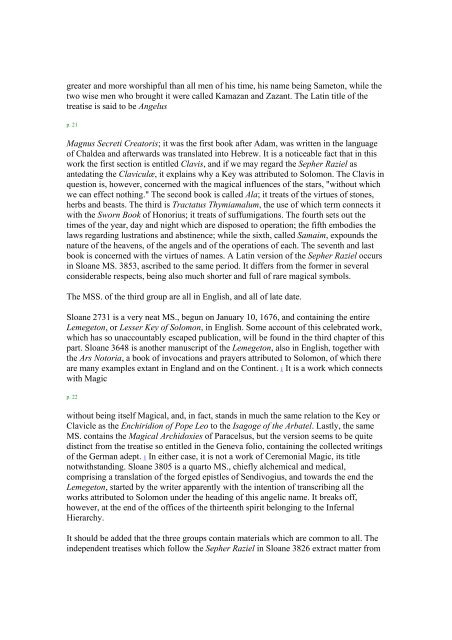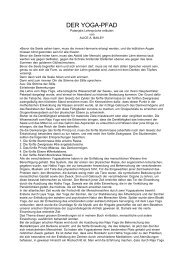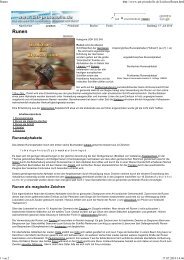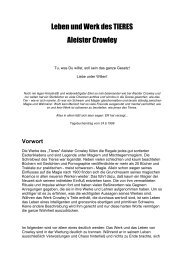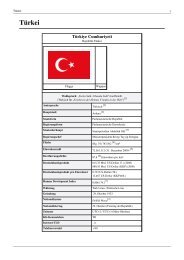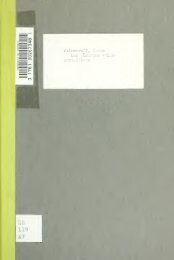The Book of ceremonial Magic
The Book of ceremonial Magic
The Book of ceremonial Magic
You also want an ePaper? Increase the reach of your titles
YUMPU automatically turns print PDFs into web optimized ePapers that Google loves.
greater and more worshipful than all men <strong>of</strong> his time, his name being Sameton, while the<br />
two wise men who brought it were called Kamazan and Zazant. <strong>The</strong> Latin title <strong>of</strong> the<br />
treatise is said to be Angelus<br />
p. 21<br />
Magnus Secreti Creatoris; it was the first book after Adam, was written in the language<br />
<strong>of</strong> Chaldea and afterwards was translated into Hebrew. It is a noticeable fact that in this<br />
work the first section is entitled Clavis, and if we may regard the Sepher Raziel as<br />
antedating the Claviculæ, it explains why a Key was attributed to Solomon. <strong>The</strong> Clavis in<br />
question is, however, concerned with the magical influences <strong>of</strong> the stars, "without which<br />
we can effect nothing." <strong>The</strong> second book is called Ala; it treats <strong>of</strong> the virtues <strong>of</strong> stones,<br />
herbs and beasts. <strong>The</strong> third is Tractatus Thymiamalum, the use <strong>of</strong> which term connects it<br />
with the Sworn <strong>Book</strong> <strong>of</strong> Honorius; it treats <strong>of</strong> suffumigations. <strong>The</strong> fourth sets out the<br />
times <strong>of</strong> the year, day and night which are disposed to operation; the fifth embodies the<br />
laws regarding lustrations and abstinence; while the sixth, called Samaim, expounds the<br />
nature <strong>of</strong> the heavens, <strong>of</strong> the angels and <strong>of</strong> the operations <strong>of</strong> each. <strong>The</strong> seventh and last<br />
book is concerned with the virtues <strong>of</strong> names. A Latin version <strong>of</strong> the Sepher Raziel occurs<br />
in Sloane MS. 3853, ascribed to the same period. It differs from the former in several<br />
considerable respects, being also much shorter and full <strong>of</strong> rare magical symbols.<br />
<strong>The</strong> MSS. <strong>of</strong> the third group are all in English, and all <strong>of</strong> late date.<br />
Sloane 2731 is a very neat MS., begun on January 10, 1676, and containing the entire<br />
Lemegeton, or Lesser Key <strong>of</strong> Solomon, in English. Some account <strong>of</strong> this celebrated work,<br />
which has so unaccountably escaped publication, will be found in the third chapter <strong>of</strong> this<br />
part. Sloane 3648 is another manuscript <strong>of</strong> the Lemegeton, also in English, together with<br />
the Ars Notoria, a book <strong>of</strong> invocations and prayers attributed to Solomon, <strong>of</strong> which there<br />
are many examples extant in England and on the Continent. 1 It is a work which connects<br />
with <strong>Magic</strong><br />
p. 22<br />
without being itself <strong>Magic</strong>al, and, in fact, stands in much the same relation to the Key or<br />
Clavicle as the Enchiridion <strong>of</strong> Pope Leo to the Isagoge <strong>of</strong> the Arbatel. Lastly, the same<br />
MS. contains the <strong>Magic</strong>al Archidoxies <strong>of</strong> Paracelsus, but the version seems to be quite<br />
distinct from the treatise so entitled in the Geneva folio, containing the collected writings<br />
<strong>of</strong> the German adept. 1 In either case, it is not a work <strong>of</strong> Ceremonial <strong>Magic</strong>, its title<br />
notwithstanding. Sloane 3805 is a quarto MS., chiefly alchemical and medical,<br />
comprising a translation <strong>of</strong> the forged epistles <strong>of</strong> Sendivogius, and towards the end the<br />
Lemegeton, started by the writer apparently with the intention <strong>of</strong> transcribing all the<br />
works attributed to Solomon under the heading <strong>of</strong> this angelic name. It breaks <strong>of</strong>f,<br />
however, at the end <strong>of</strong> the <strong>of</strong>fices <strong>of</strong> the thirteenth spirit belonging to the Infernal<br />
Hierarchy.<br />
It should be added that the three groups contain materials which are common to all. <strong>The</strong><br />
independent treatises which follow the Sepher Raziel in Sloane 3826 extract matter from


